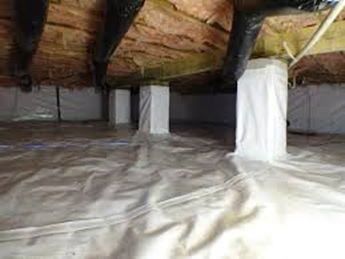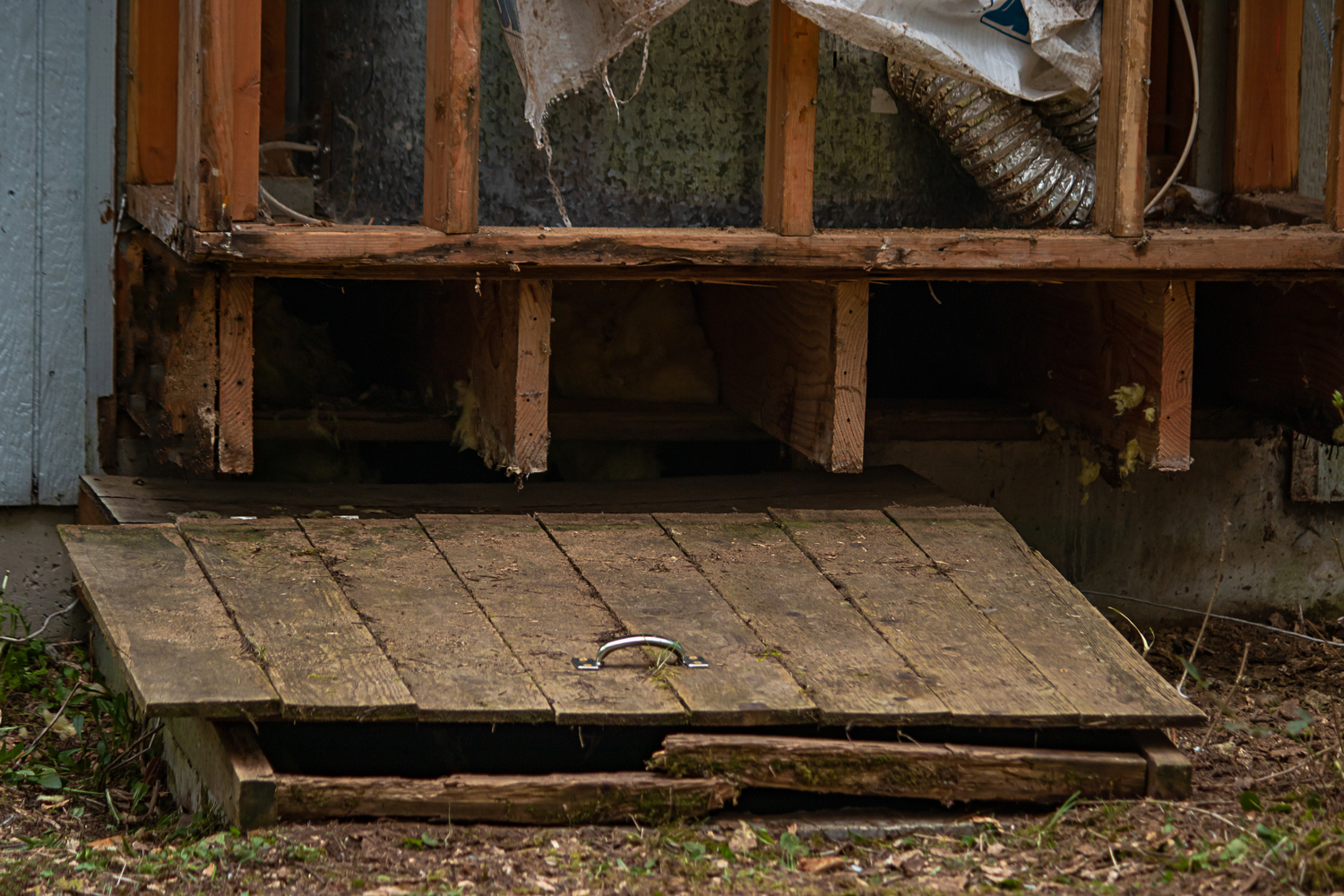A crawlspace is often the most neglected area of a home. It’s dark, often damp, and maybe a place where there may be many insects and other types of crawly things that you would rather not encounter. An important thing to remember is that a crawlspace deserves and requires much more attention than the average homeowner usually provides. Maintaining your crawlspace is just as important as the rest of your home.
A lack of the proper amount or type of crawlspace insulation can keep your home in good condition and your floors from being chilly on colder mornings. Different regions of the country require different methods of insulating a crawlspace. If you live in warm, dry climates adding insulation just between the floor joists may be adequate. If you live in colder regions, where temperatures dip below freezing and stay there for most of the season, you may need to insulate between the floor joists and also the exterior walls.

Why Insulate
Insulating your crawlspace will keep moisture from invading the space. Whenever excess moisture is present bad things can result. Moisture attracts insects and other “crawly” things. It also makes it possible for mold to develop. Mold could possible make you and your family sick and it will cause structural damage to your home.
Mold has been known to cause several different negative health conditions like asthma, skin rashes, and eye irritations. It can also cause people who are sensitive to mold exposure to have other types of allergic reactions. Patients who are undergoing chemotherapy treatment are especially vulnerable to mold exposure.
Mold eventually destroys whatever it grows on by digesting the material. It will damage wooden floors and walls to the point that these materials will require replacement. All mold can never be eliminated from your home or your crawlspace, but by controlling moisture you will lessen the possible risk of mold taking root.
Insulating Crawlspaces in Moderate to Warm Climate Zones
If days and nights rarely reach the freezing mark, or don’t remain below freezing for more than a few days in a time, you only need to insulate your crawlspace between the floor joists to protect your subfloor from damage due to excess humidity. Before adding any insulation the crawlspace all floor joists and subfloor materials should be completely dry. Also, the ground should be free of any excess moisture. The last thing you need to do is trap moisture under insulation.
The best insulation to use is made of fiberglass with 6-inch thick, R-19 rated batts without any paper backing. The batts can be held in place with either wood lath strips spaced every 1½ feet apart or you can use wire messing similar to chicken wire. By permanently attaching these support pieces you will not have to worry about the insulation coming loose and falling down.
Make sure that there are vents to the outside to allow for air to circulate. If there are none, several should be added on all sides of your home. The vents should be opened during warmer months and closed during colder ones. Before installing the insulation make sure any access holes in the subfloor for electrical wires or plumbing pipes are sealed. Spray foam insulation works well for this purpose. Also consider adding pipe insulation to any exposed water lines, just to be on the safe side.
Some homeowners choose to hire a spray-foam insulation contractor to apply expanding spray foam between the floor joists. This is fine as long as the contractor uses “closed-cell” foam. Closed-cell foam will not soak up moisture while open-cell foam will (it will soak it up like a sponge).
Insulating Crawlspaces in Colder Climate Zones
For homes in cold weather regions, insulating a crawlspace is done a little differently. Again, you should still start with a crawlspace that is completely dry. Begin the insulation process by doing everything mentioned above for warmer climates, and then begin beefing up the protection.
All of crawlspace exterior walls should also be insulated. You can use rigid foam insulation boards and glue them to the walls with construction adhesive. Then make sure to seal all of the seams between the boards with a waterproof tape.
But you shouldn’t stop there. Your crawlspace should have a vapor barrier installed on the floor. It doesn’t matter if the floor is bare earth or covered with gravel, it will always release small amounts of moisture into the crawlspace. A vapor barrier made of 6-mil plastic needs to be installed. We recommend using black plastic because it will stop any sunlight that might get in from reaching the ground The vapor barrier will stop moisture by keeping it between the plastic and the ground so that it doesn’t affect your subfloor, floor joists, or beams.
Another thing that can be done is to have a pit dug and a sump pump installed so that if any water does enter your crawlspace it will be collected in the pit and removed by the sump pump.
Still another way to combat moisture buildup would be to have a crawlspace dehumidifier installed. A crawlspace dehumidifier is specially designed to be used in crawlspaces. They are smaller in size than a normal dehumidifier and have a higher pint-per-day removal rating than regular portable residential dehumidifiers.
Water Mold Fire Restoration Can Help
Controlling moisture needs to be your number one priority in maintaining your crawlspace. If you don’t control the moisture nothing but bad things can result. Some creature more than likely will “move in” and make your crawlspace their home, and mold is the most likely thing to do so.
If you suspect or discover mold in your crawlspace, a general contractor, construction company, or handyman is not who you should turn to for help. You need the services of a certified mold remediation specialist. If you do find mold in your crawlspace or your home, you should contact Water Mold Fire Restoration at 800-905-0277 as soon as possible. We have certified mold remediation teams standing by, 24/7, that will crawl under your home, assess the damage and design a plan to eliminate your home’s mold problem. You can ask us any questions you may have about mold and safely removing it. We can also be contacted by email at help@watermoldfire.net.








